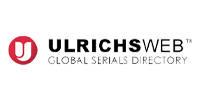Production of nickel oxide nanoparticles by laser and study of antibacterial properties against wound infection
DOI:
https://doi.org/10.58915/ijneam.v18i3.2442Keywords:
Nanotechnology, Antibacterial, Nickel oxide, Laser ablation in liquidAbstract
Nanostructure materials have a variety of technical applications that come from their remarkable size-dependent properties as compared to particle range size. Nickel oxide (NiO) nanoparticles (NPs) acquire huge attention related to their promise usage in many fields. NiO NPs are produced using pulsed laser ablation (PLA) in distilled water (DW), a highly controlled and eco-friendly method. The manufactured NiO NPs were investigated by various techniques to study their physio-chemical properties. Structural analysis of NiO nanoparticles (NiO NPs) using X-ray diffraction (XRD) revealed that they possess a face-centered cubic (FCC) crystal structure. The formation of NiO NPs is indicated by Fourier transform infrared spectroscopy (FTIR) which presents a clear FTIR peak at 688 cm–1. Field Emission Scanning Electron Microscope (FESEM) displays the common morphology with spheroids-like particles coalesced layer structure, and the mean particle size is 44 nm. Tauck's formula was employed to estimate the energy band gap, which was found to be aproximately 5.2 eV. Dynamic light scattering (DLS) shows that the particle size was 38.9 nm and that the NiO NPs had good stability. The zeta potential was negatively charged at 12.5 mV. Staphylococcus aureus (S. aureus) and Escherichia coli (E. coli) were examined for their antibacterial efficacy against the NiO NPs. The current investigation demonstrates strong antibacterial activity that may be investigated in the next clinical interventions.

















